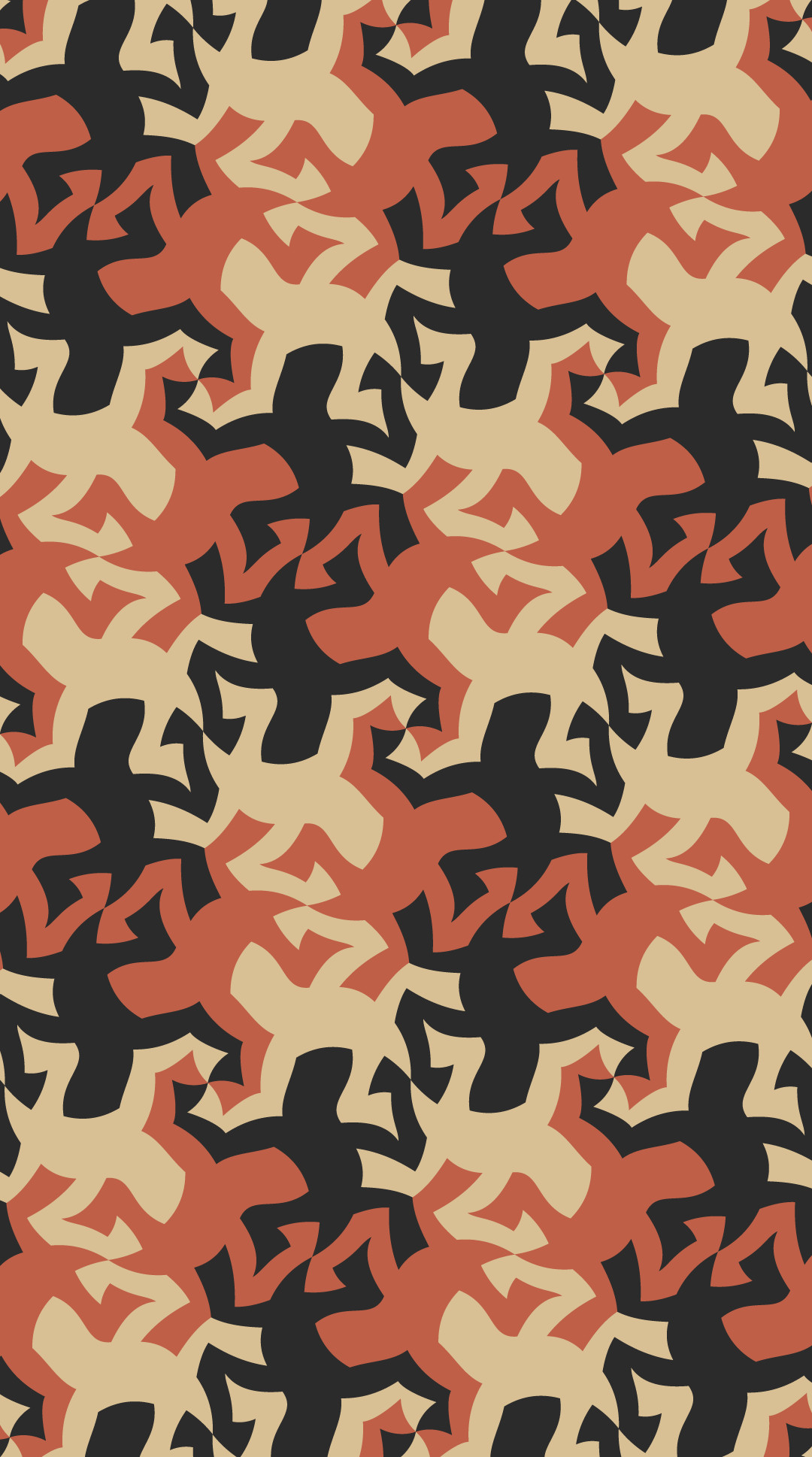
Escher, Metamorphosis I, woodcut, printed on two sheets, May 1937 A year later, Escher incorporates the first tessellation as a narrative element in the woodcut Metamorphosis I. In both places, they copy sections of the mosaics found on walls and ceilings and the upper sections of the Mezquita in Córdoba. They travel the length and breadth of Spain and make a return visit to the Moorish palace of Alhambra in Granada and the Mezquita, the great former mosque of Córdoba. In 1936, Escher and his wife Jetta journey by boat along the coasts of Italy and France to Spain. This is probably also the reason why most people mistakenly believe that his interest in tessellations only began in 1935, the year that the Escher family leaves Italy. He spends the next thirteen years living and working in Italy, and – with a few exceptions – devotes little attention to tessellations. Fourteen years later, things are very different. In the Alhambra, the Moorish citadel and palace in the Spanish city of Granada, he copies a single mosaic wall tile, only one of the many decorative mosaics that adorn the building. Escher, Eight Heads, woodcut, printed once from the whole block and eight times from different parts, January, February or March 1922 A tessellation made with this technique is called a reflection tessellation. In math, translation means shifting the position of a shape without moving it in any other way.į you want to flip your shape from side A to side B each time you trace it, it will look like a mirror image of the original shape. If you start with side A facing up do you ever have to turn it over to side B to make your tessellation? If you only have to slide the piece without flipping it over or rotating it, then you are making a translation tessellation. Try to cover your whole sheet of paper by tracing the pattern, moving it, then tracing it again. Can you figure out where to place the pattern so that your paper will be covered with repetitions of this shape with no overlaps and no gaps? Pick up your shape and make it fit with the shape you traced like a puzzle. Carefully trace around it using a pencil (you can go back over it with a marker later). Lay your shape anywhere on your clean paper. Psychologists-doctors who study the mind and how we think-are interested in his drawings because the illusions in the works help them study how humans perceive, or view, the world. Remember that cool word? This artist used patterns of shapes that cover an area so that there are no gaps and no overlaps. His repeating patterns illustrate a mathematical idea called tessellation. Escher’s works draw interest from many different people, such as art lovers, mathematicians and even psychologists. He was so inspired by this that he began to included many such patterns in his own works of art! Many of the decorative tiles there were used to make repeating patterns.


When he visited cathedrals and grand buildings in southern Spain, he noticed something very interesting to him.

#Escher tessellation how to
He went to a school for Architecture and Decorative Arts, where he learned how to draw and use design along with math! When he finished school, he traveled to many counties across Europe. Maurits Cornelis Escher was born in Leeuwarden, The Netherlands, on June 17, 1898.


 0 kommentar(er)
0 kommentar(er)
